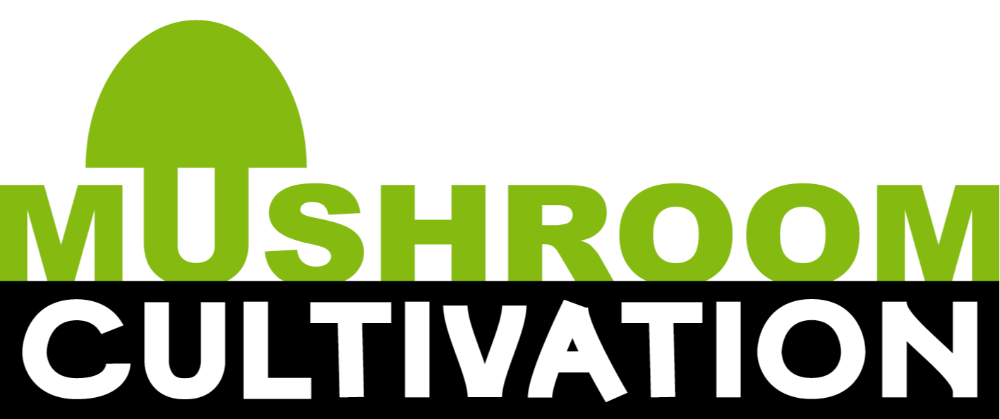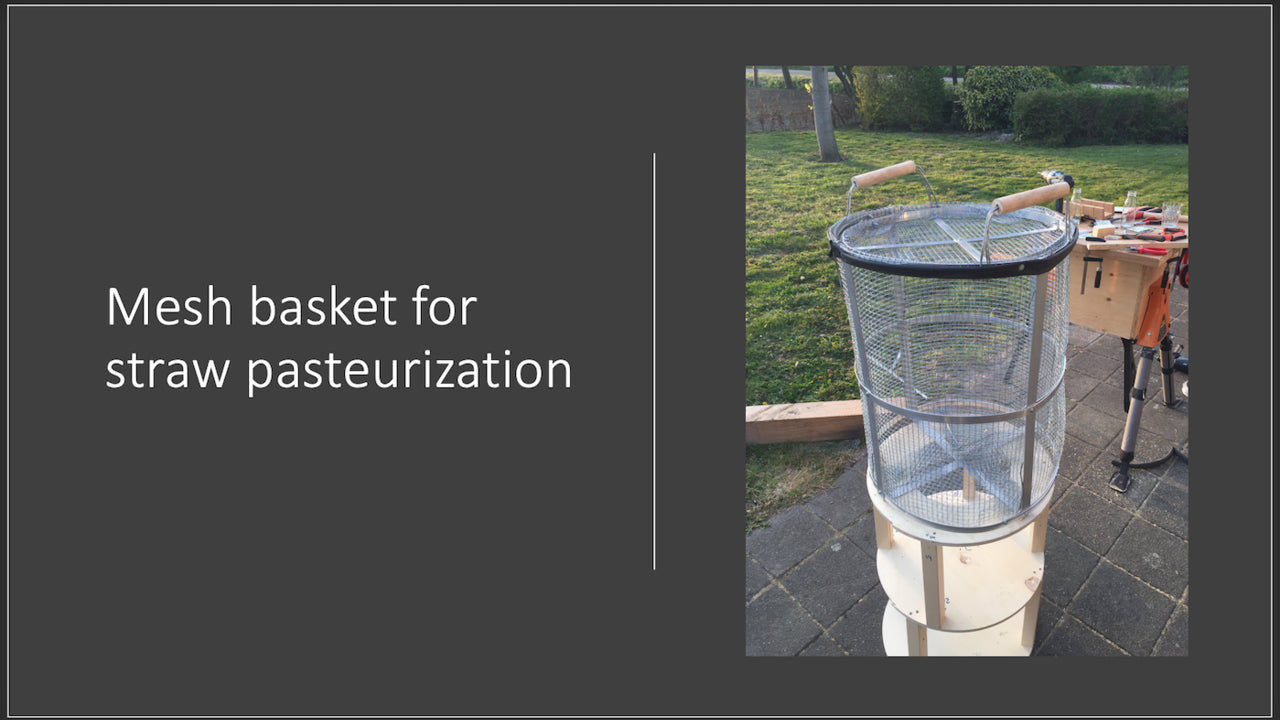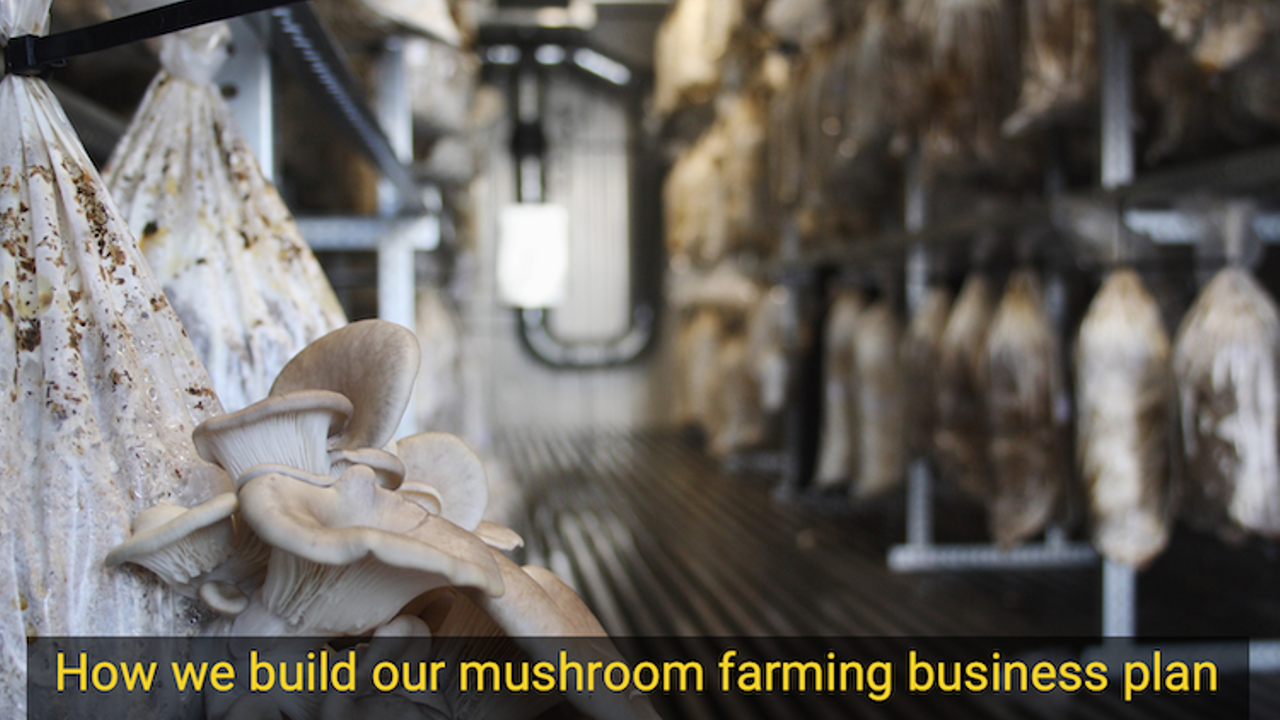Profitable mushroom farming was what we wanted to do when we started cultivating mushrooms in 2013. But we were not knowledgeable about the subject. I have eaten mushrooms but that was about it. ;-)
When we started our mushroom farm, we began with oak logs but abandoned that cultivation method 1,5 year after we started. How do you choose your cultivation method? Each method comes with its pros and cons. In this blog I’m going to take you through the most common cultivation options you have when starting profitable mushroom farming.
We have experience with 4 of these 5 methods. The one we have zero experience with, we discarded from the beginning, but we touch upon it because maybe it is interesting for you.
Inoculate logs
It was said that the Chinese were the first to cultivate shiitake mushrooms [Lentinula edodes] starting a few hundred years ago. Then in Japan they developed a method of inserting wooden plugs or dowel pins [similar like the one’s Ikea are providing for assembling their furniture] that are fully grown with mycelium from selected varieties of shiitake into holes bored in oak logs. The system has hardly changed since then.
Shiitake cultivation is not difficult, the biggest challenge, we found, is that your learning curve is very long. That is a direct result of the cultivation method which is divided in 6 steps or cultivation phases.
There are six key cultivation phases: 1) Purchase [or grow] wooden plugs with mycelium and storing it until use, 2) preparing logs for cultivation, 3) inoculation, 4) laying the logs so the mycelium can grow through the logs, 5) submerge the logs to force fruiting, and 6) harvesting and storing the crop
In the image above of this blogpost you can see Mark going through step 2 of this process. Drilling holes in the oak logs so the wooden plugs could go in. After inoculation we had to lay the logs horizontally and make small piles of them. Then we had to wait for 1,5 year [!] before we knew if our inoculation was successful. That was the moment you could prepare the log for a first flush by submerging it in water for 48 hours.
We found that selling the logs as a whole to customers, rather than harvest the mushrooms and sell those, was, money wise, the smartest thing to do. We made a small flyer in laymen terms, to help our customers understand the process. See image below
So why did we abandon this cultivation method? The three main reasons:
* After inoculation the logs needed to be stored outside for 1,5 year in a shady place. We didn’t have that place available in our farm that was inside a swimming pool.
* The learning curve was to long. It took almost 1,5 years to figure out if inoculation was successful.
* We sold the entire log and had to transport those logs to every market we went. They are next to impossible to send by mail due to size and weight.
Bottle farm
Next up in this list of options is the bottle farm. The idea behind this concept is partly based on scientific research about what amount of substrate gives the highest yield. Unfortunately, I can’t find this research anymore, if you know where I can find it, please let me know. So, in this paper they looked into various amount of substrate to determine how big your substrate bag or container should be to get the highest yield.
If I remember correctly the result was somewhere between 0,5 and 1,5 liters. When you have a container between 0,5 and 1,5 liters, your yield [in % of weight of your substrate] should be the highest.
That is one of the reasons behind the bottle farm idea. Another idea is that you can reuse the bottles and save on plastic. But the main disadvantage is the very high cost in machinery involved. In this video, you can get a good perspective on the massive automation involved. The interesting stuff starts around 1:15 in the video and o yeah, the music sucks and they have some sort of mascot running around in the recording.
Based on all this machinery, we decided to not go this direction. It would be a huge investment and it looks to me that this kind of operation can only be profitable on a huge scale. Not something we aspire to. We wanted to close local loops and use waste streams for substrate.
Buy phase 2 substrate
When we started this business, we thought that all mushroom farmers produced their own substrate. How wrong we were. Most traditional mushroom farmers in the Netherlands, buy their substrate from another mushroom farmer or substrate producer. I think it’s similar in the rest of Europe. What is phase 2 substrate?
When making straw substrate for growing oyster mushrooms, there are three specific phases the substrate goes through. Phase one is to wet the straw and form a windrow. It looks like and is basically like windrow composting. Do a web search on “windrow composting” and choose images and you will see what I mean. The image below is from a phase 1 pile at a big mushroom farmer in the Netherlands.

Image: phase one substrate windrow at mushroom farmer in the Netherlands
After it has been on the phase 1 pile for about one week, the material is ready to go into a tunnel where it is pasteurized. These tunnels can take several tons of wet material per run.

Image: Pasteurization tunnel for straw with vents in the floor
After pasteurization the straw is left to cool and is then inoculated with spawn of the species of mushrooms you want to cultivate. It’s being pressed in blocks or bags and they are shipped within one day after inoculation. After receiving the bags or blocks of substrate, they incubate at the mushroom farmer who ordered them. The blocks or bags that are produced in this way, are called phase 2 substrate bags or blocks.
The part below describes the process in technical terms. It’s a quote from: Cultivation of mushrooms, edited by L.J.L.D. van Griensven
“The composting process (phases I and II together) is a very complex process which is not yet fully understood in all its details. A mesophilic microflora begins to develop in the starting material, which consists of straw, water, minerals and an N source (for example, horse manure or broiler chicken manure).
This microflora breaks down carbohydrates (in particular polysaccharides), so that heat is released. Through the decomposition of proteins, ammonia is also produced, which causes the temperature to rise, and the straw softens through the action of the ammonia. However, the ammonia concentration must not rise too high, for this would be toxic for the microflora. As the temperature rises, the mesophilic microflora is replaced by a thermophilic microflora, but the decomposition continues.
Decomposition products of polysaccharides and proteins (including organic acids and ammonia) go into the intermediate metabolism. From this, new cells are constantly being formed, again containing polysaccharides (the cell wall) and proteins (the cell content).
Some of this microflora is in turn broken down again, while another part of it assists with the decomposition. The result is a constant change and a succession of generations of micro-organisms.”
Buy phase 3 substrate
Some substrate producers offer the possibility to do a large part of the incubation at their location. When you order phase 3 substrate, you get bags or blocks that are ready to pin [primordia phase of fruiting] in days after they arrived. You will pay more for these blocks, but the advantage is you do not have to wait. J Or at least very little. One week after receiving the blocks, you can expect a full harvest.
At rotterzwam we normally make our own substrate from coffee grounds. But with all the corona measurement and the lockdowns, people where working from home and certainly not working at the office nor drinking coffee at the office. Our coffee intake went from 5.500 kilo per month to almost nothing. If we wanted to keep selling mushrooms, we needed to switch substrate.
We choose to purchase phase 3 substrate. It means we have to focus on harvesting only and use the spare time we created by not making substrate our self, in finishing the always long list of chores that you have on any production site. So far, it has worked great for us, but we are eager to switch back to making our own substrate again.
Make your own substrate
Last but not least in the list is to make your own substrate. This what we have done so far. Only after the fire [that destroyed our farm] in May 2017 and now with the corona measurement and lockdowns, we have resorted to buying substrate because the show must go on.
Mushroom farmers that make their own substrate, usually resort to unicorn bags or perforated tubular foil bags. This has to do with the raw material used for the substrate and the amount of substrate you make. The more you make and the bigger your bags, the sooner I expect you to switch from unicorn bags to perforated tubular foil bags.

The image above shows ‘unicorn like’ bags from SacO2 [a spin off from Mycelia from Belgium]. We experimented with them for our substrate, but the results were not good. They have a filter on one side of the bag, making the mycelium growth in the not filtered side, lag significant with the filtered side. My guess is that they are best for spawn and not for substrate. But at that time in our development, we were still experimenting and learning.
When making your own substrate, there are a lot of additional choices to make. Choosing your raw material[s], cleaning your raw material, pasteurization [hot or cold], high pressure sterilization, a mixing machine, a bag filler, kind of bags, hang or stand your substrate bags etc etc. We will cover those topics in a later blog post.
Making your own substrate is giving us great satisfaction. You turn waste into taste and something of use for society. And not something trivial but a necessity of life. Food! A product that fits in a lifestyle that is oriented more on plant-based proteins. Something that you and I know is going to be more important by the day.

Image: A container filled with oyster mushrooms growing on coffee substrate @ the rotterzwam farm
We cannot sustain the current world population based on meat and animal proteins. Not even mentioning the horror we see and hear from butcheries around the world. The mushroom provides a beautiful and tasty alternative. Making your own substrate is more challenging than buying phase 1 or phase 2 substrate but it’s so much more rewarding by seeing a local material that is seen as waste, turn into taste.
Hope this helps. Let me know if you have any questions. Drop me a mail at mushroom.cultivation@rotterzwam.nl Or start and join the conversation below this post.
Why listen to us and trust our opinion?
We started our urban mushroom farm early 2013. We have been sharing the things we have learned based on open source since the beginning. We published our first video on how we operate our urban farm on February 13th, 2014. Since then we have trained more the 40 entrepreneurs, a few 100 people visited our workshops and more than 40.000 people have learned to grow mushrooms with our Growkit.
We have survived a fire that destroyed our farm in May 2017 while our insurance didn’t cover fire. In 2018 we launched a successful crowdfunding and raised €398.500 to build our new farm. That farm has been operational since June 2019 and it is unique in its kind.
We have collaborated with several entrepreneurs and organisations over the past years. Our approach is always the same. We provide tested, verified and applied information on how to run a profitable small-scale urban mushroom farm. What we teach is also what you can see in action in our farm in the city center of Rotterdam. We continually update this information based on new insights that arise from our daily operation. That way the knowledge we share is based on what we experience and the things we run into.
The biggest and most successful urban mushroom projects in Europe, have trained with us. Among them are Beyond Coffee in Denmark, Hut und Stiel in Austria, Le Champignon de Bruxelles from Belgium and Helsieni in Finland. Will you join them by starting a mushroom farm in your city?




Leave a comment
This site is protected by reCAPTCHA and the Google Privacy Policy and Terms of Service apply.